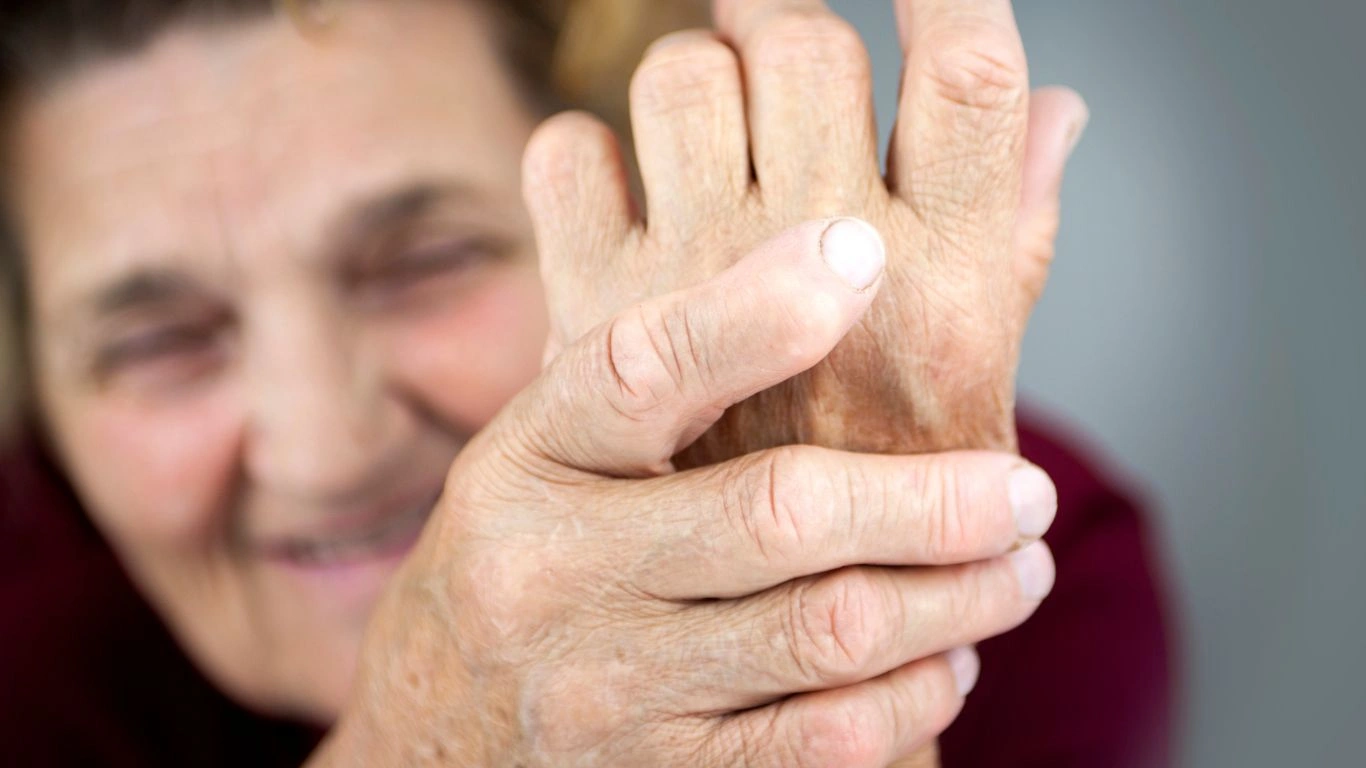Managing RA and Hip Joint Issues: Relief and Treatment Tips
Living with RA and hip joint issues is something I see almost daily in my work as a Rheumatology nurse practitioner. And let me tell you—it’s not just a “joint pain” kind of problem. The hip, being a deep and weight-bearing joint, makes this a completely different beast compared to something like RA in the fingers or wrists. My patients often describe it as a dull ache that becomes a sharp, stabbing pain during basic things—like walking up stairs, getting out of bed, or even sitting too long. Over time, it can chip away at independence and quality of life. So let’s talk about what’s really going on with RA and the hip joints, and what can be done to slow the roll of this frustrating condition.
How RA Affects the Hip Joint

Rheumatoid arthritis (RA) is sneaky. It’s systemic, which means it doesn’t just stay in the hands or knees—it can go after joints like the hips, too. And unlike osteoarthritis, which is all about wear and tear, RA is more of an overactive immune system that thinks your joints are the enemy.
Now, when RA targets the hip joint, it leads to chronic inflammation of the synovial lining. Over time, this inflammation can destroy cartilage and bone. That’s when patients start to notice reduced range of motion, stiffness (especially in the morning), and a deep, gnawing pain in the groin or outer thigh area. It’s that hidden kind of joint damage that doesn’t show up on the outside until it’s done some real internal damage.
Early Signs You Shouldn’t Ignore
From experience, patients usually don’t associate hip pain with RA until it’s already progressed. Here are a few signs I always tell my patients to look out for:
- Morning stiffness in the hips lasting longer than 30 minutes
- Groin pain or discomfort radiating to the buttocks or thigh
- Difficulty lying on one side due to hip pressure
- Fatigue that feels disproportionate to activity level
These may sound vague at first—but together, they often point to early hip involvement. And catching it early makes a big difference.
Imaging and Diagnosis: Don’t Rely on Just X-rays

When a patient comes in describing vague hip pain and has known RA, I usually don’t stop at a physical exam. X-rays are often the first step, but they don’t catch soft tissue changes early. That’s why I often push for MRIs or even ultrasound to see inflammation in the synovial lining before joint damage is visible.
One of my patients, in her mid-40s, came in complaining of lower back and thigh pain. She thought it was sciatica, but her MRI showed early erosions in the hip joint and significant inflammation. We caught it just in time to adjust her meds and slow the damage. Without that scan, she might’ve ended up with irreversible joint destruction.
RA vs Other Causes of Hip Pain
It’s important not to assume all hip pain in an RA patient is from RA. Sometimes it’s a combo platter:
- Bursitis – inflammation of the bursae can cause outer hip pain.
- Osteoarthritis – especially in older RA patients, can coexist and worsen symptoms.
- Avascular necrosis – a rare but serious complication, especially if someone’s been on long-term steroids.
Sorting through these requires a careful history and solid imaging workup—another reason why working with a rheumatology provider early on is key.
Why Treating Hip Involvement Early Matters

Trust me, once the hip joint gets involved, everything gets harder—mobility, independence, even sleep. That’s why recognizing and treating RA hip joint issues early is so crucial. Disease-modifying antirheumatic drugs (DMARDs), both traditional and biologic, play a huge role in halting joint destruction, but timing is everything. The earlier we start, the better the chance we have to preserve joint function and avoid surgery.
One thing I always tell my patients: “Don’t wait for the pain to get worse. If something feels off—speak up.” It’s easier to tweak a treatment plan in the early stages than to manage full-blown joint damage later.
Managing Daily Life with RA and Hip Joint Issues

Let’s talk real life. Having RA and hip joint issues isn’t just about flares and meds—it affects your day-to-day. I’ve had patients who went from running errands with ease to struggling just to get their pants on in the morning. And honestly, there’s no one-size-fits-all fix here. What works for one person might not work for another, and that’s okay. The goal is to build a toolkit that works for you.
One of my favorite go-to recommendations is using assistive devices before you think you “need” them. I know, I know—it can feel like giving up. But trust me, it’s not. It’s about protecting your joints. Things like grabbers, shoe horns with long handles, and raised toilet seats can be game-changers. You’re not weak for using them—you’re smart for staying ahead of joint strain.
Smart Movement Strategies
With hips, movement is a balancing act. Too much stress can flare inflammation. But too little movement? That leads to stiffness and weakness. I usually encourage my patients to incorporate gentle, low-impact activities:
- Swimming or water aerobics – minimizes joint pressure while boosting strength
- Stretching – especially hip flexor and hamstring stretches to maintain range of motion
- Modified yoga – seated or supported poses can be incredibly effective
I had one patient who swore by her early-morning water walking sessions. She said, “It’s the only time my hips feel like they belong to me.” That kind of feedback is golden—it’s not just about movement, it’s about finding something that makes you feel *good* again.
Medication Management: More Than Just Pain Relief

By now, most people with RA are familiar with the standard players—methotrexate, biologics like Humira or Enbrel, and the newer JAK inhibitors. But when we’re talking hips, especially with deeper inflammation, sometimes it’s about fine-tuning the regimen to target those stubborn joints more effectively.
For patients with significant hip involvement, I often collaborate with rheumatologists to reassess the treatment plan. Sometimes that means switching from oral DMARDs to injectables. Other times, it’s about adding a biologic or adjusting dosing frequency. One thing I always emphasize: communicate any changes in pain or mobility early. Waiting too long often means the damage is already underway.
Managing Flares Without Overdoing Steroids
Flares that hit the hips? Brutal. And while steroids can offer quick relief, we have to use them carefully. Long-term steroid use has its own set of risks—especially for hip health (hello, avascular necrosis).
Instead, I help patients build a flare-up plan that includes:
- Temporary rest of the affected joint (but not full immobilization)
- Ice or heat therapy depending on what soothes the inflammation best
- NSAIDs (if tolerated) for short-term relief
- Communication with their provider about any flare lasting more than 3 days
One woman I work with keeps a “flare toolkit” in a tote bag—ice pack, heating pad, anti-inflammatory cream, and a small journal to jot symptoms. She says it helps her feel in control. I love that.
Nutrition and Supplements That Support Hip Health

Food won’t cure RA, but it can absolutely dial inflammation up—or down. When it comes to hip joint issues, keeping systemic inflammation low is key. I always talk to my patients about anti-inflammatory nutrition, but without the pressure to go “all in” overnight. Small changes go a long way.
What I Often Recommend
- Omega-3s from fish or supplements – excellent for joint inflammation
- Colorful veggies – rich in antioxidants and phytonutrients
- Limit processed foods and added sugars – they’re known inflammation triggers
- Turmeric or curcumin – some evidence supports mild pain relief
Supplements can help too, but always run them by your provider. I’ve had patients ask about everything from collagen to boswellia. Some can be helpful—others interfere with meds. Better safe than sorry.
Also, don’t underestimate hydration. Joints need fluid to function, and being even mildly dehydrated can make pain feel worse. A little thing, but it matters.
Surgical Options When RA and Hip Joint Issues Progress

Even with the best medical management, sometimes the hip joint suffers enough damage that surgery becomes the next step. From my years working closely with rheumatologists and orthopedic surgeons, I can tell you that hip replacement surgery has changed many lives for the better. It’s not a decision to rush into, but it’s definitely something to keep on the radar if pain and function aren’t improving despite treatment.
For people with RA and hip joint issues, surgery can:
- Relieve severe, persistent pain that limits daily activities
- Restore mobility and improve quality of life
- Prevent further joint deformity or complications
That said, surgery isn’t without risks, especially in RA patients who may have other health concerns or medications that affect healing. It’s crucial to have a thorough discussion with your healthcare team to weigh benefits and risks.
Types of Hip Surgery Commonly Recommended
Here are the main surgical options your rheumatologist or orthopedic surgeon might discuss:
- Total Hip Replacement – replacing both the ball and socket of the hip joint; most common and effective for RA-related joint damage.
- Hip Resurfacing – a bone-preserving option, but less common for RA patients.
- Synovectomy – removing inflamed synovial tissue to reduce pain and slow damage, usually done earlier in the disease process.
In my experience, patients often report a “new lease on life” after total hip replacement. The ability to walk pain-free, play with grandkids, or even just climb stairs without fear is huge. But again, timing and individualized planning are everything.
Living Well with RA and Hip Joint Issues: My Advice From the Front Lines

Managing RA is a marathon, not a sprint—especially when the hips get involved. Over the years, I’ve learned that the best outcomes come from a combo of proactive medical care, smart lifestyle choices, and a solid support system. Here are some things I always tell my patients:
Build Your Healthcare Team
Don’t rely on just one doctor. A rheumatologist, primary care provider, physical therapist, and sometimes an orthopedic surgeon all play vital roles. I often act as a bridge, helping patients navigate these relationships and making sure communication flows. When everyone’s on the same page, management is smoother and complications fewer.
Advocate for Yourself
It sounds cliché, but being your own health advocate makes a difference. If your hip pain worsens or you feel like your meds aren’t cutting it, speak up early. Document changes in symptoms, and don’t be shy about asking questions. I always encourage my patients to bring a journal or use a health app to track pain, stiffness, and mobility—this info helps your providers tailor treatment better.
Stay Active, Stay Curious
Even on tough days, moving in some way—whether it’s stretching, a slow walk, or chair exercises—helps keep joints flexible and muscles strong. And don’t hesitate to explore new therapies or support groups. Learning from others going through the same challenges can be empowering.
Resources and Support for RA and Hip Joint Issues
If you want to dig deeper or connect with others, here are a few reliable resources I often recommend:
- https://www.rheumatology.org/ – The American College of Rheumatology’s site offers tons of patient info on RA.
- https://www.arthritis.org/ – Great for practical tips on living with arthritis, including RA and joint-specific guidance.
- https://www.niams.nih.gov/ – The National Institute of Arthritis and Musculoskeletal and Skin Diseases has evidence-based info on treatment and research updates.
These sites have been vetted by professionals and provide trustworthy, up-to-date info that can supplement what you hear from your healthcare team.
Disclaimer
This article is intended for educational purposes and should not replace professional medical advice, diagnosis, or treatment. Always consult with your healthcare provider for any questions regarding your health or medical condition.

Tarra Nugroho is a dedicated Nurse Practitioner with a strong foundation in family and preventive care. She brings both compassion and clinical expertise to her practice, focusing on patient-centered care and health education. As a contributor to Healthusias.com, Tarra translates medical knowledge into clear, empowering articles on topics like women’s health, chronic disease management, and lifestyle medicine. Her mission is simple: help people feel seen, heard, and informed—both in the clinic and through the content she creates. When she’s not caring for patients, Tarra enjoys weekend hikes, plant-based cooking, and curling up with a good health podcast.





